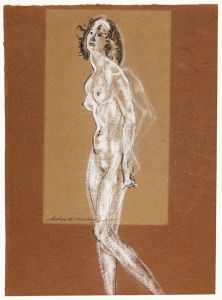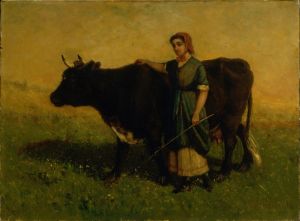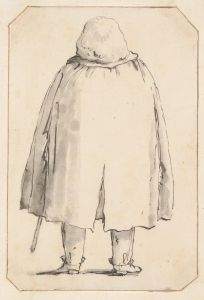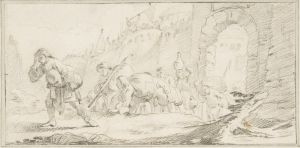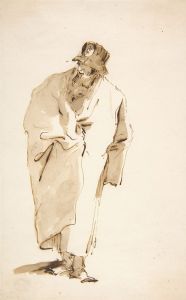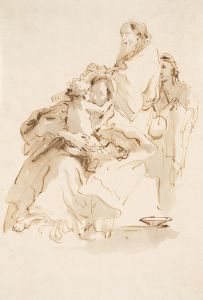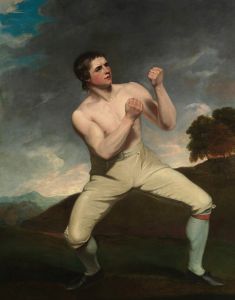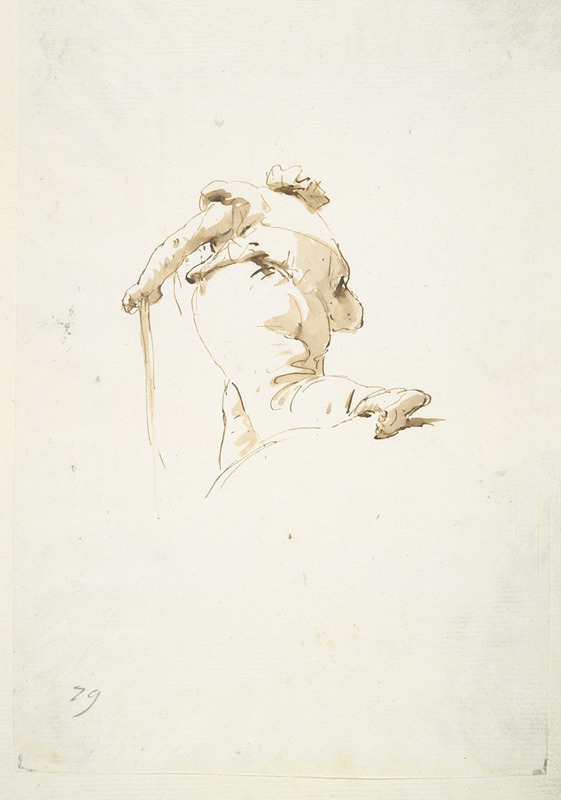
Walking male figure seen obliquely from below
A hand-painted replica of Giovanni Battista Tiepolo’s masterpiece Walking male figure seen obliquely from below, meticulously crafted by professional artists to capture the true essence of the original. Each piece is created with museum-quality canvas and rare mineral pigments, carefully painted by experienced artists with delicate brushstrokes and rich, layered colors to perfectly recreate the texture of the original artwork. Unlike machine-printed reproductions, this hand-painted version brings the painting to life, infused with the artist’s emotions and skill in every stroke. Whether for personal collection or home decoration, it instantly elevates the artistic atmosphere of any space.
Giovanni Battista Tiepolo, an Italian painter and printmaker, is renowned for his grand and imaginative frescoes, as well as his masterful use of light and color. Among his extensive body of work is the drawing titled "Walking Male Figure Seen Obliquely from Below." This piece is a testament to Tiepolo's skill in capturing dynamic human forms and his ability to convey movement and perspective.
Tiepolo was born in Venice in 1696 and became one of the most prominent artists of the 18th century. He was known for his ability to create dramatic compositions that often featured figures in motion, and his work was characterized by a light, airy quality that was achieved through his expert use of chiaroscuro and color. His drawings, like "Walking Male Figure Seen Obliquely from Below," often served as studies for larger works, allowing him to experiment with form and perspective.
The drawing in question showcases Tiepolo's interest in the human figure and his ability to depict it from unusual angles. The perspective of the figure being viewed from below adds a sense of grandeur and dynamism to the composition. This technique was not uncommon in Tiepolo's work, as he frequently employed dramatic perspectives to enhance the narrative and emotional impact of his scenes.
Tiepolo's drawings were typically executed with pen and ink, sometimes with washes, on paper. These works were not merely preparatory sketches but were often highly finished pieces in their own right. They reveal Tiepolo's keen understanding of anatomy and his ability to convey the weight and movement of the human body with just a few deft strokes.
"Walking Male Figure Seen Obliquely from Below" exemplifies Tiepolo's skill in capturing the essence of a figure in motion. The drawing likely served as a study for a larger composition, possibly a fresco or an oil painting, where such dynamic figures would be part of a more complex narrative scene. Tiepolo's ability to render the human form with such vitality and precision made him a sought-after artist in his time, and his works continue to be studied and admired for their technical brilliance and artistic innovation.
Throughout his career, Tiepolo worked on numerous prestigious commissions across Europe, including in Germany and Spain, where he created some of his most famous frescoes. His influence extended beyond his lifetime, impacting artists of the Rococo and Neoclassical periods. Tiepolo's drawings, such as "Walking Male Figure Seen Obliquely from Below," remain important examples of his artistic legacy, showcasing his unique approach to composition and his mastery of the human form.
In summary, Giovanni Battista Tiepolo's "Walking Male Figure Seen Obliquely from Below" is a remarkable example of his ability to depict dynamic human figures with precision and flair. The drawing reflects his innovative use of perspective and his deep understanding of anatomy, elements that contributed to his reputation as one of the leading artists of the 18th century.









